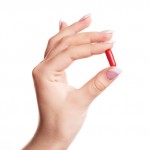Study finds orthopedic surgical outcomes rely on patient activity levels
Orthopedic surgery is common in the U.S., as the U.S. Centers for Disease Control and Prevention stated that 51.4 million procedures were performed in 2010. Sometimes, however, surgery alone is not enough to heal an injury. A recent study conducted by researchers at Washington State University and published in the Journal of the American Academy of Orthopaedic Surgeons found that an orthopedic surgery patient's recovery outcome reflects his or her pre- and post-operative levels of participation in physical activities.
Usually after an athlete gets injured, he or she is told to walk it off. The recent study's evidence seems to support that this adage only works for certain injuries. The study reported that patients should ask their orthopedic surgeon if their activity level plays an important role in treatment because certain patients, such as those who recently underwent an anterior cruciate ligament reconstruction, are at higher risk for reinjury if they do not adjust their physical activity patterns appropriately.
"In orthopedics, we want to restore function to take away pain and to help patients return to activity," said Robert H. Brophy, M.D., orthopedic surgeon and lead study author. "We're still learning about how to best use, quantify and measure activity levels to optimize prognostics and outcomes."
Observing patient metrics
The study researchers stated that scales for the shoulder, hip, knee and ankle are standardized based on a patient's activity level. Orthopedic physicians and surgeons should consider how often certain tasks are performed by a patient just as much as they judge patient outcomes based on age, weight and overall health.
For knee surgeries, which are among the most common focuses of orthopedists according to the American Academy of Orthopedic Surgeons, patients are associated with higher baseline activity. Average knee surgery patients have lower body mass indexes and they have higher activity levels in the two years following ACL reconstruction. The study found that these patients were significantly less satisfied with the surgical outcome if they had lower post-surgical activity levels. These findings suggest that knee injuries are more common among the athletic population and that following surgery, light physical activity can be of some benefit.
The study found that patient expectations on the effectiveness of physical therapy and baseline activity levels are the strongest predictors for failure in rotator cuff tears. Furthermore, patients who were active pre-surgery were less likely to respond to nonsurgical treatment, according to the study. This suggests that patients believe orthopedic shoulder surgery and physical therapy will heal their rotator cuff tears to a level that would allow them to continue past activity levels. The patients expected to be able to perform the same physical activities that they practiced before surgery, but this may cause another problem in their shoulder.
The study examined hip surgery outcomes as well. Male individuals with lower-than-average BMIs were most likely to resume high levels of physical activity in one to five years following a total hip replacement surgery. The study also found that physical activities such as occupational lifting and standing may accelerate the development and risk of osteoarthritis.
Using pre-surgery data to support post-surgery outcomes
All of the study's data provide orthopedic surgeons with knowledge that can be used to better treat their patients in the future. The collection and analysis of patient history can affect the predicted outcomes of surgery. Age, gender, weight and symptoms can tell physicians an adequate amount of information before a surgery, however, the analysis of physical activity levels and occupational or lifestyle habits can lead to more accurate predictions and possibly affect the type of treatment prescribed.
"There's not just one activity level variable," said Brophy. "It depends on the population, the injury you're studying, etc. We're making progress, and the progress varies depending on what you're looking at."



